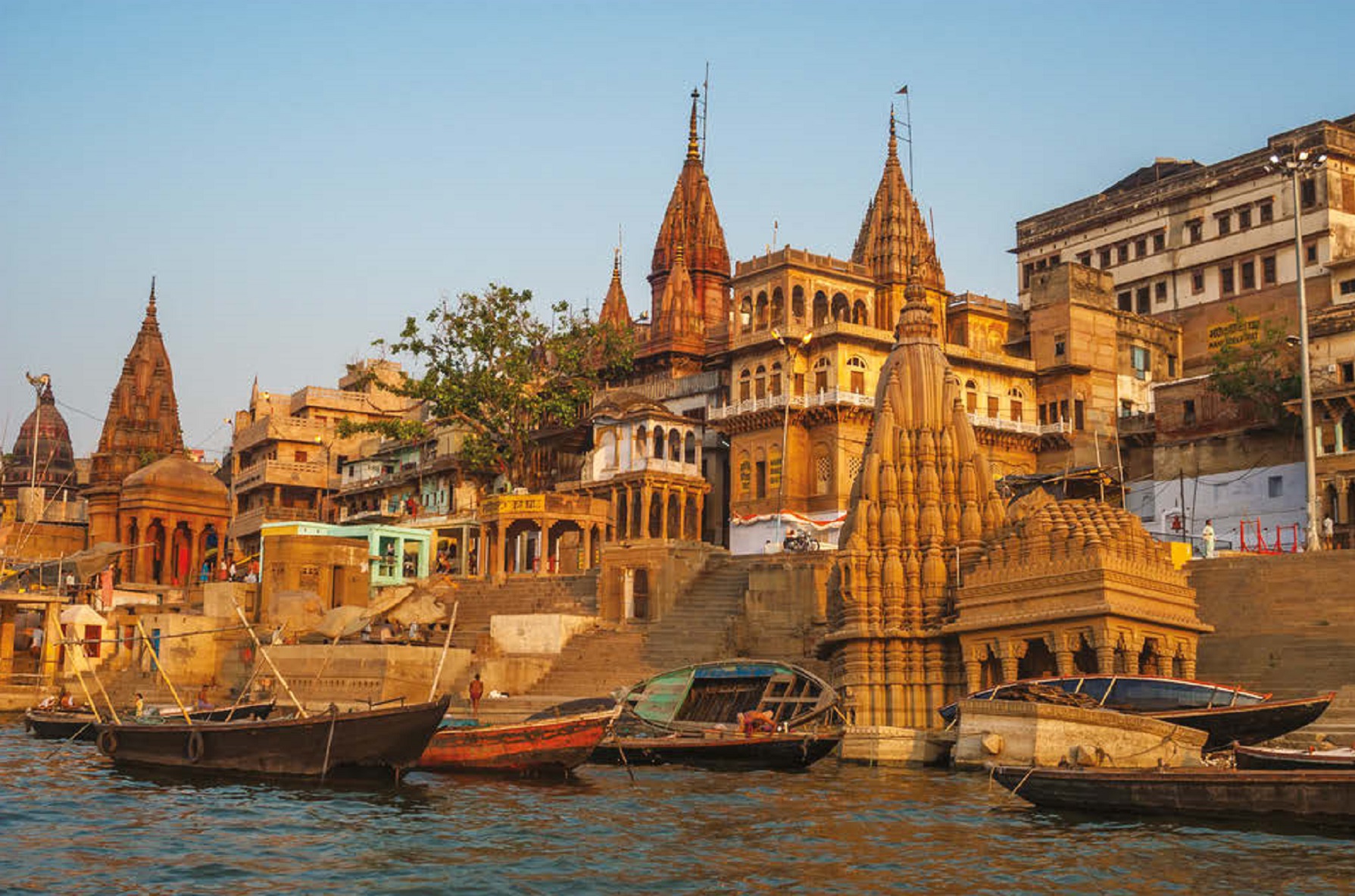 A Brief History of Varanasi
A Brief History of Varanasi
Varanasi’s history dates back more than 3,000 years, making it one of the oldest continuously inhabited cities on Earth. Ancient texts mention it as a major hub of spirituality and learning. According to Hindu belief, Lord Shiva himself founded the city, giving it sacred status.
The city has also been a significant center for Buddhism—just 10 km away lies Sarnath, where Lord Buddha delivered his first sermon after attaining enlightenment. Over the centuries, Varanasi flourished as a hub for trade, silk weaving, music, philosophy, and art.
Religious and Spiritual Importance
Hinduism
Varanasi holds immense significance for Hindus. Bathing in the holy Ganges River is believed to cleanse sins, and many pilgrims come here to perform last rites for loved ones, believing it ensures salvation. The Kashi Vishwanath Temple, dedicated to Lord Shiva, is one of the twelve Jyotirlingas and the most revered shrine in the city.
Buddhism
Nearby Sarnath is where Buddhism began. The Dhamek Stupa and the Ashoka Pillar stand as symbols of Buddhist history and teachings.
Other Faiths
Varanasi also has connections to Jainism, with Parshvanatha, the 23rd Tirthankara, believed to have been born here. The city is also home to significant Muslim heritage, seen in its mosques, Mughal architecture, and silk weaving traditions.
Major Attractions in Varanasi
1. The Ghats of Varanasi
The city is famous for its ghats—stone steps leading to the river. There are over 80 ghats, each with its own history and significance.
-
Dashashwamedh Ghat: The most popular ghat, known for the spectacular Ganga Aarti ceremony.
-
Manikarnika Ghat: The main cremation ghat, symbolizing the cycle of life and death.
-
Assi Ghat: A favorite among students and travelers, with yoga sessions and boat rides.
2. Kashi Vishwanath Temple
One of the holiest temples in India, dedicated to Lord Shiva. Recently renovated as part of the Kashi Vishwanath Corridor Project, it attracts millions of devotees every year.
3. Sarnath
A sacred site for Buddhists, where Lord Buddha preached his first sermon. The Dhamek Stupa and Mulagandha Kuti Vihar Monastery are key attractions here.
4. Banaras Hindu University (BHU)
One of Asia’s largest universities, founded by Pandit Madan Mohan Malaviya. The campus houses the New Vishwanath Temple, a modern marvel.
5. Ramnagar Fort
Located on the eastern bank of the Ganges, this 17th-century fort houses a museum with royal artifacts, vintage cars, and manuscripts.
Festivals and Cultural Life
Varanasi is alive with festivals and cultural events year-round.
-
Dev Deepawali: Celebrated 15 days after Diwali, the ghats glow with millions of lamps.
-
Ganga Mahotsav: A five-day cultural festival showcasing music, dance, and boat races.
-
Makar Sankranti: Known for kite flying and rituals along the Ganges.
-
Mahashivratri: Dedicated to Lord Shiva, celebrated with grandeur at Kashi Vishwanath Temple.
The city is also renowned for classical music, with legends like Ravi Shankar and Bismillah Khan hailing from Varanasi.
Local Cuisine in Varanasi
Varanasi’s food scene is as rich as its culture. Some must-try delicacies include:
-
Kachori Sabzi: A popular breakfast dish.
-
Tamatar Chaat: A spicy street snack unique to the city.
-
Banarasi Paan: Betel leaf preparation, a cultural symbol of Banaras.
-
Lassi and Malaiyyo: Sweet, creamy drinks to beat the heat.
Shopping in Varanasi
Varanasi is famous worldwide for its Banarasi silk sarees, renowned for their rich embroidery and fine craftsmanship. Other souvenirs include wooden toys, brassware, and handmade carpets. The bustling markets near Godowlia and Chowk are perfect for shopping enthusiasts.
Travel Tips for Visitors
-
Best Time to Visit: October to March, when the weather is pleasant.
-
How to Reach:
-
By Air: Lal Bahadur Shastri International Airport connects Varanasi with major Indian cities.
-
By Rail: Varanasi Junction is a major railway hub.
-
By Road: Well-connected by highways to Lucknow, Patna, and Delhi.
-
-
Getting Around: Auto-rickshaws, cycle rickshaws, and boats along the Ganges are the best ways to explore.
-
Respect Local Customs: Dress modestly at temples and ghats, and avoid photography at cremation ghats.
Why Visit Varanasi?
Varanasi is not just a city—it’s an experience of life, death, and spirituality. From the spiritual aura of the ghats to the vibrant chaos of its streets, Varanasi leaves an everlasting impression on every traveler. It is a place where history, faith, and culture come together in a way that is uniquely Indian.
Conclusion
Varanasi is the heart of India’s spiritual heritage, offering travelers a mix of culture, devotion, and timeless traditions. Whether you’re seeking inner peace, exploring ancient history, or simply soaking in the vibrant atmosphere, a trip to Varanasi is an unforgettable journey.
So, the next time you plan your travels, make sure Varanasi is on your bucket list—it’s a city that will change the way you see life and spirituality.

You must be logged in to post a comment.